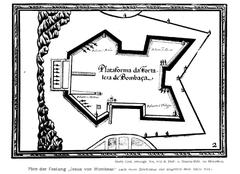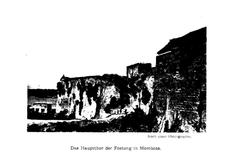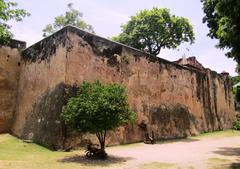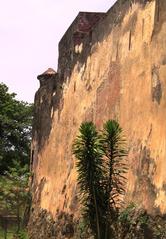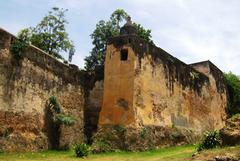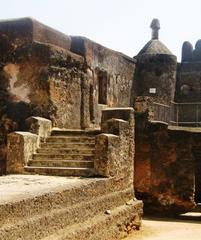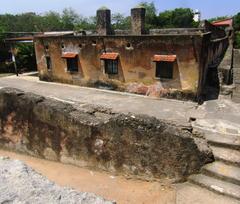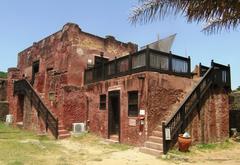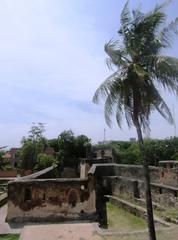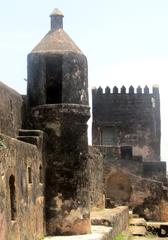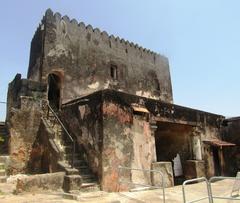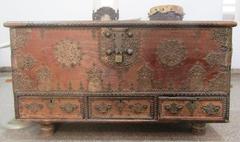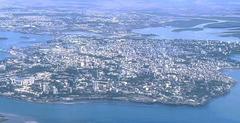
Fort Jesus Museum: Visiting Hours, Tickets, and Historical Sites in Mombasa County
Date: 14/06/2025
Introduction
Fort Jesus Museum stands as a monumental symbol of Mombasa’s rich and complex history, perched along Kenya’s picturesque coastline. Built between 1593 and 1596 by the Portuguese under King Philip II, this UNESCO World Heritage Site was designed by Italian architect Giovanni Battista Cairati to protect Portuguese interests and control Indian Ocean trade routes. Its distinctive star-shaped Renaissance architecture blends European military design with Swahili and Arab influences, reflecting centuries of cultural interchange across Africa, Arabia, Persia, and Europe. Today, Fort Jesus is a living museum, offering immersive insights into Mombasa’s vibrant past—from Portuguese colonial ambitions to Omani rule and British administration (UNESCO, Lake Nakuru Kenya, Travel Moran, Travel4Purpose).
Visitors can explore robust coral stone walls, bastions named after saints, underground tunnels, and ingenious water cisterns. The museum displays artifacts—including ceramics, maritime relics, weapons, and cultural objects—that chronicle trade, conflict, and fusion along the East African coast. Open daily from 8:00 AM to 6:00 PM, with affordable tickets for both residents and tourists, Fort Jesus offers guided tours, special cultural events, and stunning photographic opportunities overlooking Mombasa’s Old Port and the Indian Ocean.
Table of Contents
- Introduction
- Visiting Hours and Tickets
- Travel Tips and Accessibility
- Nearby Attractions and Photographic Spots
- Special Events and Guided Tours
- Historical Background
- Legacy and Continuing Relevance
- Frequently Asked Questions (FAQ)
- References
Visiting Hours and Tickets
- Opening Hours: Daily, 8:00 AM – 6:00 PM (last entry at 5:30 PM).
- Standard Ticket Rates (as of June 2025):
- Non-resident adults: 1,200 KES
- Non-resident children: 600 KES
- East African adults: 400 KES
- East African children: 200 KES
- Kenyan citizen adults: 200 KES
- Kenyan citizen children: 100 KES
- Special Events: Night tours and sound & light shows (Thursday–Sunday) extend to 10:00 PM.
- Where to Buy: Tickets are available at the entrance or can be booked online (card and cash accepted; carry cash for convenience) (TravelTriangle, Snippets of Nairobi, Mike’s Travel Guide).
Travel Tips and Accessibility
Fort Jesus sits in Mombasa Old Town, along Nkrumah Road, easily accessible by taxi, tuk-tuk, or public bus. Key tips:
- Best Visiting Time: Early morning (8:00–11:00 AM) for cooler temperatures and fewer crowds.
- Footwear: Wear comfortable walking shoes for uneven surfaces.
- Accessibility: Wheelchair and stroller access is possible in most areas, though some tunnels and bastions may pose challenges.
- Traveling with Children or Elderly: The fort is generally safe, but visitors with mobility issues or health conditions should be mindful of stairs and terrain.
Nearby Attractions and Photographic Spots
While at Fort Jesus, consider exploring:
- Mombasa Old Town: Renowned for Swahili architecture and lively markets.
- Mombasa Marine National Park: Ideal for snorkeling and diving.
- Mandhry Mosque: One of Mombasa’s oldest mosques.
- Mombasa Tusks: Iconic Moi Avenue landmark. Photographers will appreciate panoramic views from the bastions and the fort’s unique Renaissance design—especially at sunrise or sunset (Mad-Traveller).
Special Events and Guided Tours
- Guided Tours: Available in English and Swahili; can be arranged at the entrance or booked in advance. Tours typically last 1–2 hours, led by licensed guides providing historical insights (Mike’s Travel Guide).
- Sound and Light Show: Held Thursday–Sunday evenings; immersive storytelling with projections and dinner options.
- Cultural Performances: The fort occasionally hosts Swahili art, music, and craft exhibitions.
- Swahili Cultural Centre and Butterfly House: Live workshops and biodiversity experiences.
Historical Background
Origins and Construction
Fort Jesus was constructed by the Portuguese (1593–1596) to secure their trade routes to India and protect Mombasa’s Old Port. Designed by Giovanni Battista Cairati, its geometric star-shape and thick coral stone walls reflect Renaissance military architecture and Christian symbolism (UNESCO, Lake Nakuru Kenya, Colonial Voyage).
Strategic Importance and Turbulent History
The fort was repeatedly contested due to its strategic position. Between 1631 and 1875, it changed hands at least nine times, primarily between the Portuguese, local sultans, and Omani Arabs. After a long siege, the Omanis captured the fort in 1698, ending Portuguese dominance. Later, the British used it as a garrison and prison (Travel Moran, Travel4Purpose).
Architectural Features and Innovations
- Bastions: Five bastions, each named after a saint, provide defensive coverage.
- Oman House: Residence of the Omani governor.
- Water Cisterns and Wells: Ingenious Portuguese and Omani engineering for rainwater harvesting.
- Ramparts and Tunnels: Designed for defense and escape during sieges.
- Graffiti and Inscriptions: Multilingual markings in Portuguese, Arabic, and Swahili.
Cultural Interchange and Global Significance
Fort Jesus reflects centuries of cultural interaction among African, Arab, Turkish, Persian, and European societies. Its architecture influenced Mombasa’s Old Town and the broader Swahili coast. The fort played a pivotal role in safeguarding Indian Ocean trade routes, with commodities such as ivory, spices, and enslaved people passing through its gates (Soluap).
Museum Transformation and UNESCO Status
Declared a national park in 1958 and opened as a museum in 1960, Fort Jesus became a UNESCO World Heritage Site in 2001 for its outstanding universal value as a symbol of cultural interchange. The museum features artifacts from local excavations and shipwrecks, as well as displays on the slave trade, maritime history, and Swahili culture (Travel Moran, Kenya Safari).
Preservation and Restoration
Ongoing efforts by the National Museums of Kenya focus on conservation and restoration, maintaining the fort’s historical authenticity while making it accessible to visitors. These initiatives ensure the fort remains a vibrant educational and cultural resource (Soluap).
Historical Timeline
- 1593–1631: Portuguese control
- 1631–1632: Sultan of Mombasa
- 1632–1698: Portuguese
- 1698–1728: Omani Arabs
- 1728–1729: Brief Portuguese reoccupation
- 1729–1741: Omani Arabs
- 1741–1828: Local governors under Omani/British protection
- 1828–1856: Omani and Zanzibar Sultanate
- 1895–1963: British colonial rule
Museum Exhibits and Visitor Experience
Inside the museum, visitors will find:
- Ceramics and Pottery: Artifacts from Portuguese, Arab, Persian, and Swahili cultures.
- Weaponry and Maritime Relics: Portuguese cannons, armor, and shipwreck artifacts.
- Exhibits on the Slave Trade: Shackles, coins, and trade goods documenting this dark chapter.
- Chapel of St. Anthony of Padua: One of Sub-Saharan Africa’s oldest European churches.
- Art Gallery: Regularly rotating exhibitions of local contemporary art.
- Interactive Experiences: Swahili craft workshops and the Mombasa Butterfly House.
Facilities and Amenities
- Restrooms: Clean, accessible facilities.
- Gift Shop: Souvenirs, books, and locally crafted items.
- Refreshments: Onsite café and nearby restaurants.
- Shaded Areas and Benches: Rest spots throughout the fort.
- Parking: Limited; taxis and public transport are recommended during peak times.
Practical Tips
- Arrive early to avoid crowds and heat.
- Dress modestly (shoulders and knees covered).
- Bring water, sunscreen, and a hat.
- Carry cash for tickets and small purchases.
- Hire a guide for deeper context.
- Check for special events before your visit.
Frequently Asked Questions (FAQ)
Q: What are Fort Jesus’s opening times?
A: Daily, 8:00 AM–6:00 PM (last entry 5:30 PM). Night tours run Thursday–Sunday until 10:00 PM.
Q: How much are tickets?
A: Non-resident adults 1,200 KES, Kenyan residents 200 KES, children and East African rates available.
Q: Are guided tours available?
A: Yes, in English, Swahili, and other languages on request.
Q: Is Fort Jesus accessible for people with disabilities?
A: Yes, with some limitations in tunnels and bastions.
Q: Can I take photos inside Fort Jesus?
A: Photography is allowed in most areas, but flash is restricted in some galleries.
Plan Your Visit
Fort Jesus Museum offers an engaging journey through Kenya’s coastal history and culture. To maximize your visit:
- Book tickets online or arrive early.
- Consider guided tours and check the schedule for sound and light shows.
- Download the Audiala app for audio guides and event updates.
- Explore related articles on Mombasa historical sites and Kenyan cultural heritage.
Summary and Call to Action
Fort Jesus Museum remains a gateway to understanding the historical and cultural dynamics of Mombasa and East Africa. Its Renaissance architecture, diverse exhibits, and panoramic views make it a must-visit destination. Preservation by the National Museums of Kenya ensures its legacy endures. Plan ahead, explore nearby attractions, and immerse yourself in the stories that shaped this coastal city. For a richer experience, download the Audiala app and follow official channels for updates and cultural events (UNESCO, Travel Moran, Mike’s Travel Guide, Travel4Purpose).
References
- Fort Jesus Mombasa: Visiting Hours, Tickets, History & Travel Guide, Lake Nakuru Kenya
- Fort Jesus UNESCO World Heritage Site, UNESCO
- Fort Jesus Mombasa History, Colonial Voyage
- Fort Jesus National Monument, Travel Moran
- Fort Jesus Guide, Travel4Purpose
- Fort Jesus Museum Mombasa Entrance Fees, Twende Sasa
- Fort Jesus Museum Walking Tour in Mombasa, Mike’s Travel Guide
- Fort Jesus Museum Mombasa Entrance Fee, Snippets of Nairobi
- Exploring the History and Culture of Fort Jesus in Mombasa, Living Loving Kenya
- Fort Jesus Museum Visitor Information, TravelTriangle
- Fort Jesus Mombasa Famous Places, Mad-Traveller
- Fort Jesus Mombasa Popular Tourist Attraction, Soluap
